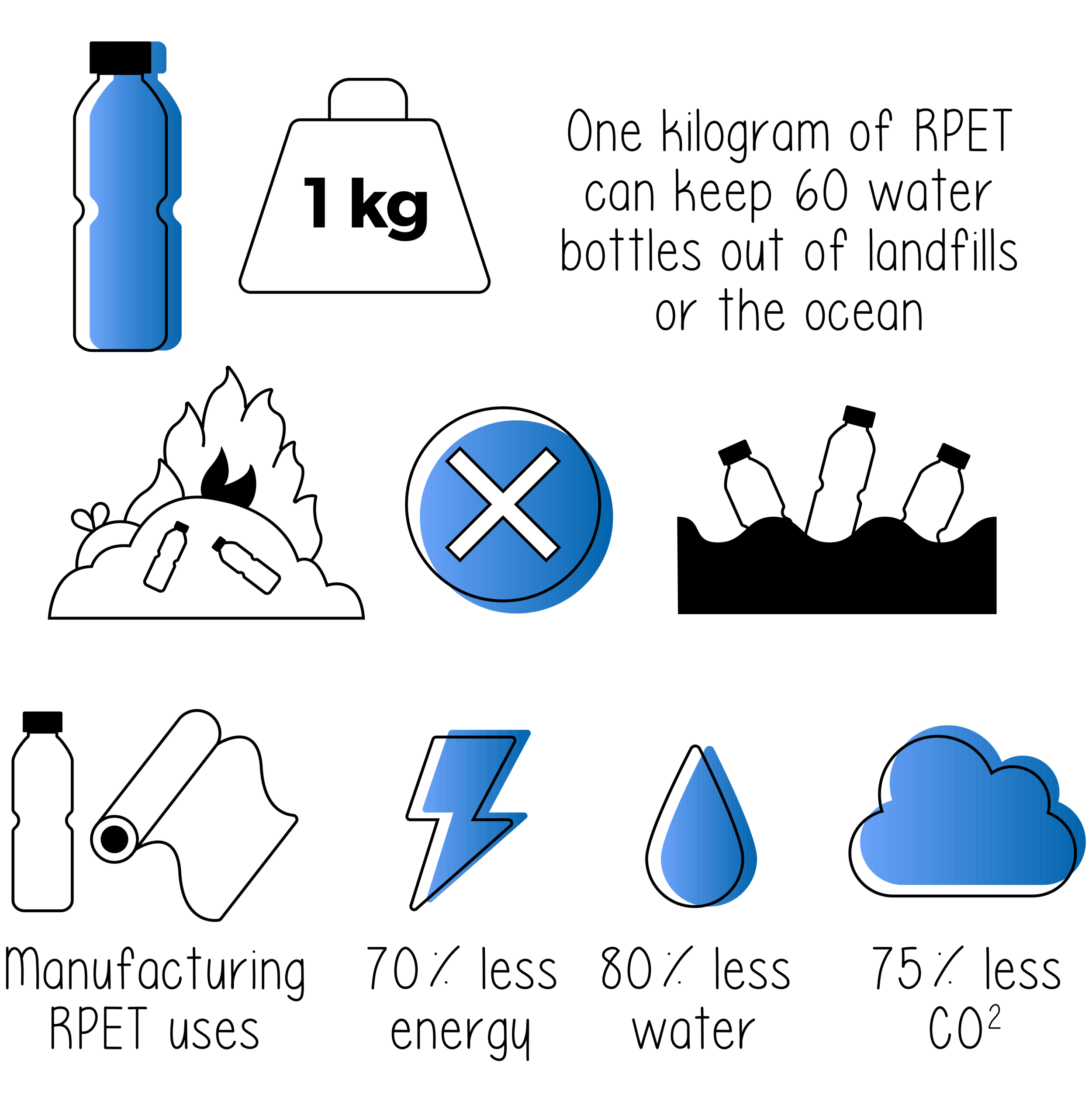#01
RPET as an Alternative to Virgin Polyester
What is RPET?
RPET stands for Recycled Polyethylene Terephthalate, which is a fabric made from recycled plastics (such as PET bottles). PET, or polyethylene terephthalate, is also known as polyester, which is considered to be the most important and used synthetic fiber worldwide due to its affordability and excellent performance.
RPET as the safer, better alternative to regular virgin polyester
In terms of waste, RPET reduces the need for raw materials and extends the life of plastics that could have otherwise ended up in landfills or the ocean.
In terms of pollution, RPET skips the energy-intensive oil extraction process of polyester, thereby significantly reducing emissions and minimizing its carbon footprint.
RPET in use
In terms of functionality, RPET performs just as well as regular virgin polyester. It’s an easy care fabric that can be used for any occasion. It is also a strong and durable performance fiber that can wick away moisture.
The application of RPET in products has a wide range that can be used to make corporate-wear, fashion apparel and accessories, hospitality products, bags and packaging, home textiles, etc.
How is RPET made?
1. Plastics and PET bottles are diverted from landfills, collected, selected, cleaned, and shredded.
2. The plastic is processed into PET pellets, passed through a spinneret, melted, and cooled into fibers.
3. The fibers are then smoothed, stretched, and placed on reels in order to make yarn.
4. The yarn is woven and dyed at an accredited facility, using environmentally responsible processes.
5. RPET Textile is finally made to be used into various products.
6. At the end of its life, RPET is still non-biodegradable, but can be recycled back into pellets, spun into yarn, and woven intro fabric again.










